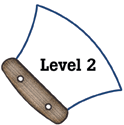
Alaska Science
Key Element A10
A student who meets the content standard should understand that living things are made up mostly of cells and that all life processes occur in cells (Cells).
 |
Alaska Science A student who meets the content standard should understand that living things are made up mostly of cells and that all life processes occur in cells (Cells). |
|
Performance Standard Level 2, Ages 8–10
|
Standards Cross-References
|
||
|
National Science Education Standards All organisms are composed of cells–the fundamental unit of life. Most organisms are single cells; other organisms, including humans, are multicellular. (Page 156) Cells carry on the many functions needed to sustain life. They grow and divide, thereby producing more cells. This requires that they take in nutrients, which they use to provide energy for the work that cells do and to make the materials that a cell or an organism needs. (Page 156) |
Benchmarks Some living things consist of a single cell. Like familiar organisms, they need food, water, and air; a way to dispose of waste; and an environment they can live in. (Page 111) Microscopes make it possible to see that living things are made mostly of cells. Some organisms are made of a collection of similar cells that benefit from cooperating. Some organisms’ cells vary greatly in appearance and perform very different roles in the organism. (Page 111) |
|
Table of Contents | Return to Alaska Native Knowledge Network